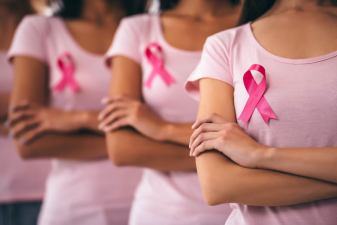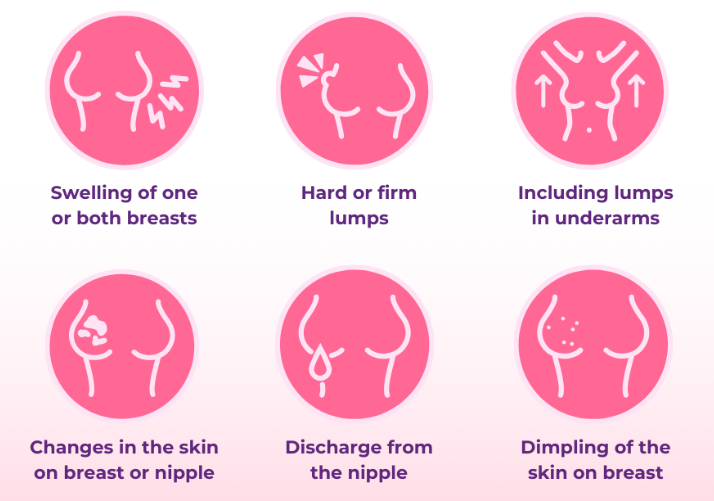When it comes to breast cancer, early detection can mean the difference between life and death. This article delves into the world of early breast cancer: from understanding its intricacies to the advocacy movements designed to promote awareness, support, and research. For anyone looking to navigate this crucial topic—whether you're a patient, caregiver, or simply seeking knowledge—this guide will provide invaluable insights, expert commentary, and real-life stories that highlight the urgent need for vigilance and compassion in the face of this disease.

Understanding Early Breast Cancer: Core Facts
Early breast cancer primarily refers to the stages of the disease that are diagnosed when the cancerous cells are still localized within the breast or nearby lymph nodes. At this stage, the cancer has not spread to other parts of the body, which significantly improves treatment outcomes and survival rates. According to the American Cancer Society, the five-year relative survival rate for localized breast cancer is 99%. These statistics underscore the importance of early detection through routine screening such as mammograms.
Breast cancer can manifest in various forms, with the most common types including invasive ductal carcinoma and invasive lobular carcinoma. Risk factors for early breast cancer include genetic predisposition, age, lifestyle choices, and reproductive history. Recognizing the symptoms—such as changes in breast size, shape, lumps, or unusual discharge—can lead to timely medical consultations and intervention.
Symptoms and Screening Guidelines
The challenge often lies in the silent nature of early breast cancer, as many patients are asymptomatic until the disease progresses. It is essential for women to adhere to recommended screening guidelines:
l Women aged 40-44 should have the option to begin annual mammograms.
l Women aged 45-54 should undergo annual mammograms.
l Women 55 and older should either continue with annual mammograms or transition to biennial screenings.
Regular self-examinations are also encouraged as a proactive measure for detection, allowing individuals to familiarize themselves with their own bodies and notice any changes.

The Landscape of Breast Cancer Awareness
The landscape of breast cancer awareness has evolved dramatically over the last few decades, shaped by advocacy, research advancements, and public health initiatives. The surge in awareness has been fueled by high-profile campaigns such as Susan G. Komen's Race for the Cure and the pink ribbon movement, which mobilize communities and promote funding for research and patient support.
Despite progress, disparities still exist in access to care and information, particularly among marginalized groups. According to the CDC, breast cancer incidence rates are significantly higher in white women compared to African American women; however, mortality rates are higher among African American women, highlighting a critical gap in healthcare equity.
Reasons for the Awareness Surge
Early diagnosis initiatives are often propelled by the realization that late-stage breast cancer treatments are more aggressive and, unfortunately, less successful. The narrative surrounding breast cancer has shifted from fear to empowerment, focusing on personal agency, community support, and the critical impact of research funding.
This awareness has translated into policy changes, with many states implementing laws mandating insurance coverage for mammograms and necessary follow-ups, allowing for broader access to essential screening services.

The Broader Implications of Early Detection
Expert Perspectives
Dr. Susan McCarthy, an oncologist specializing in breast cancer, emphasizes the necessity of normalization around breast health discussions. “The stigma that surrounds cancer diagnosis needs to be addressed. Women should feel comfortable discussing their breast health with healthcare providers, friends, and family,” she asserts. This perspective is crucial in fostering an environment conducive to early detection.
Data Insights
According to a recent study published in the Journal of the American Medical Association, there has been a 1.3% annual decrease in breast cancer mortality since the late 1980s, largely attributed to advances in early detection and improvements in treatment modalities. The study also revealed that women who are regularly screened are more likely to be diagnosed at an early stage, emphasizing the critical role of public health education in reducing mortality rates.
Impact Analysis
The implications of early breast cancer detection extend far beyond individual health benefits. A surge in detected cases can lead to a heightened emphasis on preventative care within public health policies. As awareness grows and more individuals are screened, it may prompt healthcare systems to adapt and allocate more resources toward research and treatment innovation.
Diverse Perspectives
While the general consensus advocates for early detection and public awareness, some critics argue against the over-medicalization of breast health. There are concerns regarding the psychological effects of false positives and unnecessary biopsies. Balancing the urgency of early detection with informed choices is an ongoing conversation in the medical community.
Connecting Through Real Experiences
Take the story of Linda, a 47-year-old mother of two, who discovered a lump during a self-examination. Unsure of her next steps, she bravely scheduled a mammogram, which revealed early-stage breast cancer. “The moment I got the call, I felt my world shatter,” she recalls. However, through swift intervention and a solid support system, Linda underwent a lumpectomy and radiation therapy. Today, she is cancer-free and actively advocates for breast cancer awareness in her community.
Similarly, consider the experience of Mark, who lost his mother to late-stage breast cancer after years of undiagnosed symptoms. Her story motivated him to launch a local nonprofit aimed at educating young adults about the importance of breast health. “I wish she had known. If sharing her story can help just one person catch the disease early, then I believe we’re making progress,” he says passionately.
These narratives not only humanize the statistics but also inspire others to take charge of their health proactively.

The Time for Action is Now
Early breast cancer detection is not merely a medical protocol; it’s a lifesaving opportunity that should be available to every individual. As we continue to raise awareness, support advocacy efforts, and share powerful stories, we create a ripple effect that can influence lives and policy.
As readers, consider ways to engage with this movement: participate in local awareness campaigns, discuss breast health openly, and advocate for continued research funding. Together, we can foster a culture that prioritizes health, knowledge, and empowerment around breast cancer, transforming fear into hope for countless individuals facing this challenging journey. Your voice and your actions can make a difference—stand up for early detection today.

